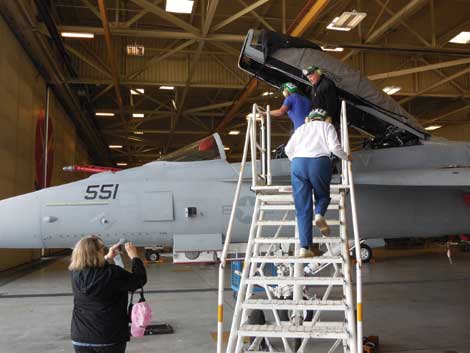Question: Where and how to live?
The choices for how and where to live as an older adult are growing.
In her book (“With a Little Help From Our Friends: Creating Community As We Grow Older”), author and journalist Beth Baker observes that, as roughly 10,000 baby boomers a day are turning 65, “a significant cultural shift is underway.â€
The current and coming generation of older adults is realizing, says Baker, “that they can make other choices about where and how to live. With intention and planning, people around the nation are creating ways to live in community, alternatives that give them more control, more companionship, more dignity and choice than generations past.â€
Here, adapted from Baker’s book, is a brief guide to what some of these creative options are called and how they work.
Co-housing
In a cohousing situation each person or family purchases a residence — be it an apartment, townhouse or even a single-family house — which contains everything a typical home would have (i.e., a kitchen, bathroom, bedroom and living room). However, the residences are linked to a shared space, such as a yard and gardens and a large common room, dining area and kitchen that can accommodate group meals or gatherings.
The point of cohousing is community and being able to live independently without living entirely alone. Cohousing setups are typically intergenerational and don’t involve staff-provided services, but they can be age-specific. A few “senior cohousing communities†have been built, and some allow residents to hire household and care services as needed.
House sharing
In these arrangements, a person who has a home may invite a friend or family member, or even a tenant, to move in and help with expenses and chores. The setup might involve people of the same age or generation, and the arrangement is one of peers residing together for companionship and cost efficiency. Sometimes two or more friends actually purchase or rent a residence together and become housemates.
Another house sharing scenario can revolve around the needs of an elderly property owner who doesn’t want to relocate but can no longer care for herself or a large home entirely on her own. A younger person (and younger can even mean someone who’s 60 or older) may be willing to provide some caregiving and transportation assistance in exchange for affordable or flexible housing. If so, the two can make for well-matched housemates.
Housing cooperatives
These types of member-owned, resident-governed non-profit communities are common in certain cities (New York, for one) and are generally not age-specific.
A co-op can be made up of housing that ranges from apartments to single-family houses to mobile homes. The co-op board, typically consisting of elected residents, decides what shared services the co-op will provide (such as social activities and maintaining the grounds) and often has approval rights over potential home buyers. Mobile home cooperatives are spreading in rural areas, and senior housing cooperatives have taken root, particularly in the Midwest.
Naturally Occurring Retirement Communities (NORC)
Neighborhoods or locations that just happen to have a significant number of older people (hence, the community’s commonality is naturally occurring or organic) create a network of shared support services, such as helping one another — or sharing hired help — for grocery store runs, transportation to medical appointments, or lawn-mowing. By working together, each person is enabled to safely and comfortably “age in place.â€
Niche retirement communities
A traditional retirement community is an age-restricted, usually 55-plus community that enables older adults to live independently but with access to social activities and community amenities, such as yard maintenance services or fitness and recreation facilities. (Retirement destinations such as Florida and Arizona have many such places.)
A “niche†or “affinity†retirement community is one where residents share a common interest, religion or identity. The link may revolve around, for example, shared ethnicity, sexual orientation, occupation or hobby.
Villages
Founded in the Beacon Hill neighborhood of Boston in 2002, the village model of “neighbors-helping-neighbors†provides a way for older adults to stay in their homes and community. There are upwards of 125 village communities throughout the nation today, with 100 more getting started, most operating via a mix of paid staff and volunteers who assist older residents with everything from transportation and technology training to home repairs and grocery shopping. Villages frequently provide social activities and classes as well. Members pay annual dues and are encouraged to volunteer themselves.
You can read a longer version of this article at aarp.org/livable-communities/info-2014/creative-age-friendly-housing-options. For more about Beth Baker’s book, â€visit bethbaker.net. More about livable communities is at aarp.org/livable or email AARP at livable@aarp.org.
Amy Levner, who wrote this article, is the manager of the Livable Communities team at AARP,. She can be reached at alevner@aarp.org.
